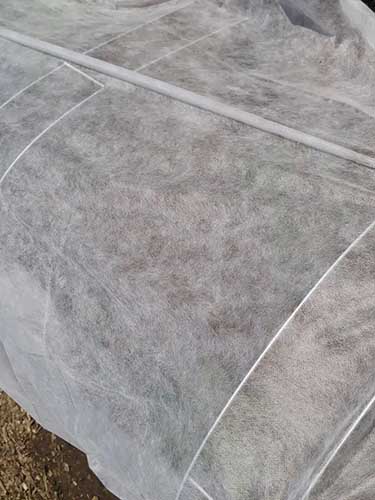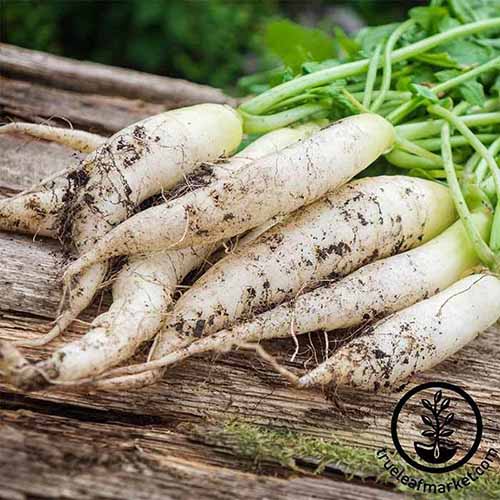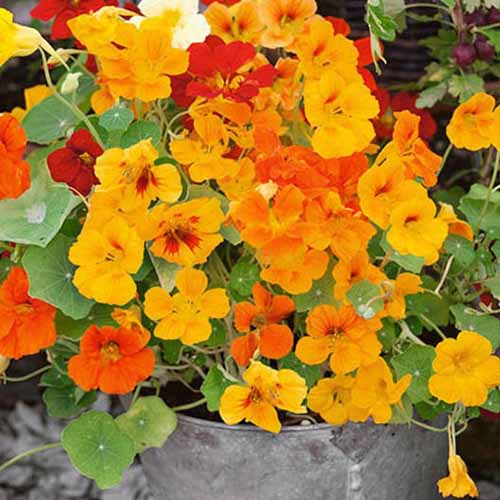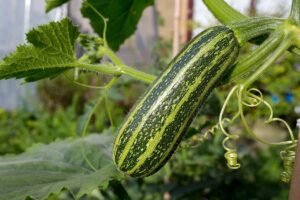Fresh zucchini is an integral part of the summer vegetable garden. Unfortunately, pests like aphids and squash bugs can cause damage and reduce harvests.
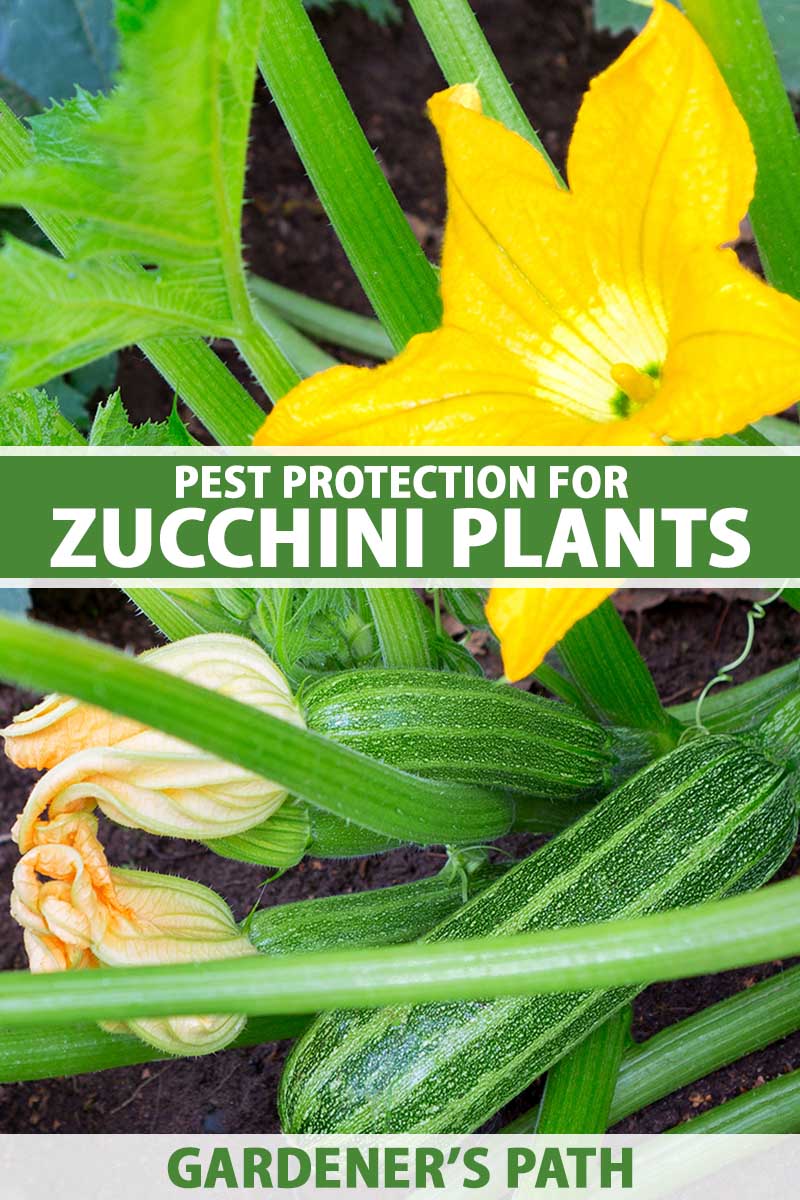
We link to vendors to help you find relevant products. If you buy from one of our links, we may earn a commission.
While there are various methods available for getting rid of bugs once you have an infestation on your hands, it’s best to be proactive.
Using physical protections, like floating row covers, is particularly effective if you are trying to grow crops organically.
Common zucchini diseases, like bacterial wilt, can also be spread by pests.
So, while vigilantly checking crops and looking for pests is helpful, it’s important to protect the plants as they are growing.
After all, taking a proactive approach early in the season can make a world of difference in the overall performance of your crops, and the harvest you’re able to bring in.
Let’s take a look at a few of the top options, including physical and cultural methods for protecting your harvest.
What You’ll Learn
What Kinds of Pests Attack Zucchini?
Squash bugs are the most notorious pests that attack zucchini and their fame is well-earned – they can decimate summer squash quickly.
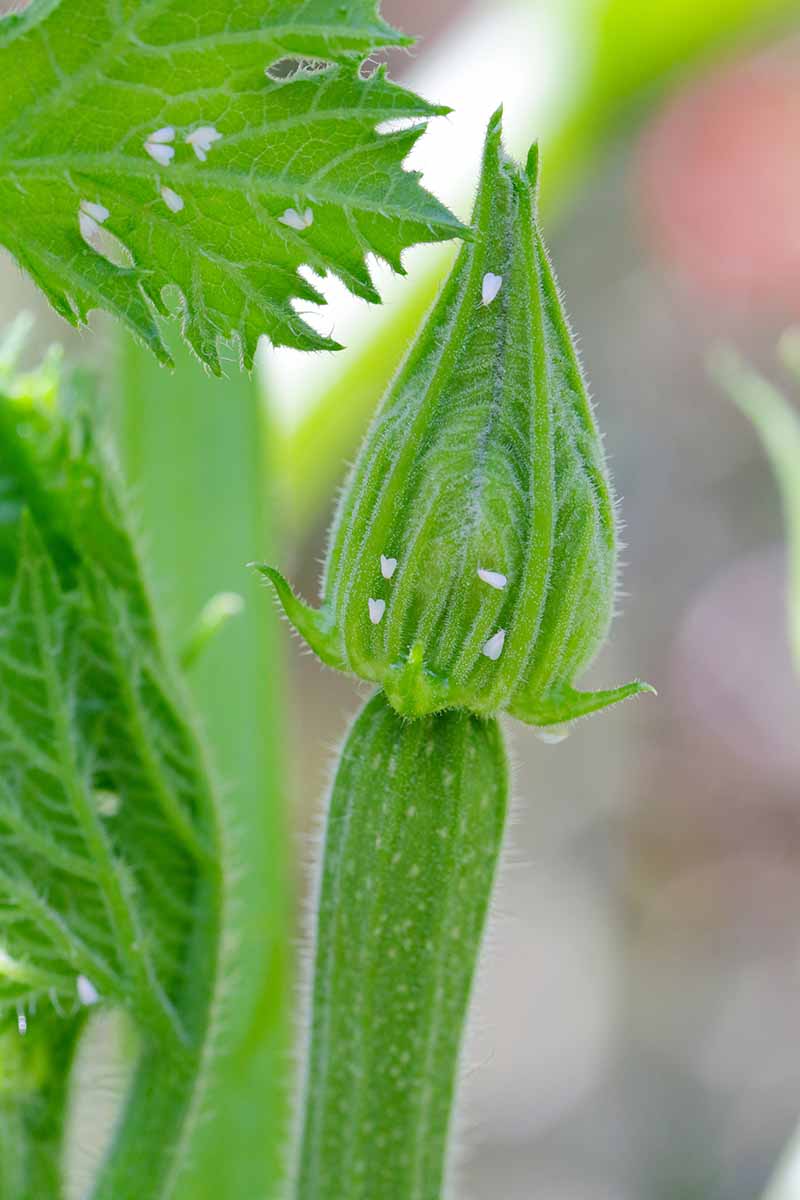
Aphids also damage plants and leave sooty mold in their wake. Whiteflies, spider mites, vine borers, and thrips may also pay your garden a visit.
To learn more about the many pests that may attack zucchini, check out our detailed guide.
Why Does Zucchini Need Protection?
Protecting your squash can be vital not only for individual plant health, but also for the performance of your garden as a whole.

While the plants can take some damage, large infestations of bugs like aphids can cause slow growth and a reduction in yields.
Certain pests can also carry diseases such as wilt and cucumber mosaic virus that may cause damage not just to your squash, but to a variety of other crops in your garden.
Check out our guide on identifying and controlling zucchini diseases to learn more.
Let’s take a look at some methods of protecting your plants from pest infestation:
Physical Protection
Physical barriers can prevent pests from gaining access to your plants.
When using a physical barrier to protect summer squash, you need to be careful not to let the plants overheat.
Hard covers like plastic cloches shouldn’t be used for very long after the seeds have germinated since they trap heat and can effectively cook the seedlings.
Additionally, too much retained moisture and humidity can lead to powdery mildew infection. Other options like those described below may prove to be more beneficial.
Floating Row Covers
Floating row covers are my go-to solution for protecting zucchini and other types of summer squash.
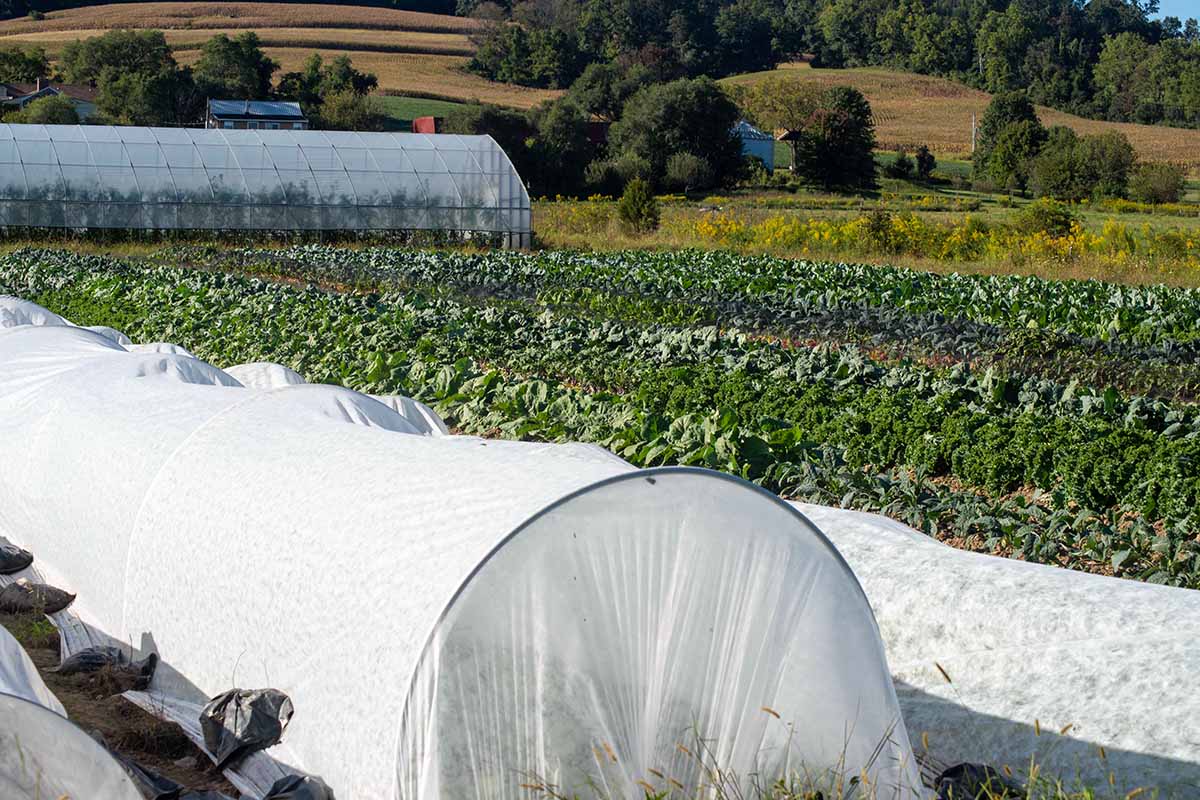
Make sure your row cover is held down at the edges with bricks or other heavy objects. You could also use clips or clothespins to secure the cover to a raised bed.
Not only does this help keep the covers in place but it also limits the ability of bugs to access the crops by crawling under the covers.
This summer-weight row cover from Gardener’s Supply Company is a good option for protecting your squash because it is lightweight and won’t lead to overheating in warm summer temperatures.
Like other cucurbits, zucchini do need to be pollinated to set fruit. Once the plants begin to flower, the row covers will need to be removed for at least one hour per day, or the blossoms will need to be pollinated by hand.
Plant Collars
To keep cutworms off of young plants, you can use protective collars.
You can make a DIY collar by cutting a toilet paper roll lengthwise and wrapping it around the base of a young plant. You want the collar to fit around the stem without covering any leaves.
Gently push the collars into the soil and make sure they protect the plants all the way around the stem.
The goal is to create something akin to a protective wall all around the vegetables. This makes it harder for cutworms, slugs, and other pests to attack the young stems.
Toilet paper rolls break down over time, so you don’t have to worry about removing the collars.
Cultural Methods
Companion planting and crop rotation are key to keeping pest numbers low.
While these methods offer less direct protection than physical barriers, they can still make a major difference.
Companion Planting
Companion planting is a relatively easy way to protect your zucchini from pests while also helping your crop thrive.
Growing radishes, especially the ‘White Icicle’ type, is my personal favorite method for deterring squash bugs.
It’s a daikon radish so it is a little different from what I usually grow but it performs well, especially in compacted soil.
You can find small packets or bulk seeds at True Leaf Market.
I like companion planting with nasturtiums since they attract pollinators and the leaves, flowers and seeds are edible.
Dwarf ‘Jewel’ nasturtiums are small and easy to fit into the garden, and they add some beautiful pops of color!
You can find seeds available from Eden Brothers in a variety of packet sizes.
Other options for companion planting with zucchini include marigolds, catnip, bee balm, and mint.
These plants attract pollinators and other beneficial insects. They also have strong scents that repel certain pests like aphids.
Crop Rotation
Crop rotation is especially important since squash bugs and vine borers can hide out in the soil or under decomposing leaves and come back to decimate your squash year after year.
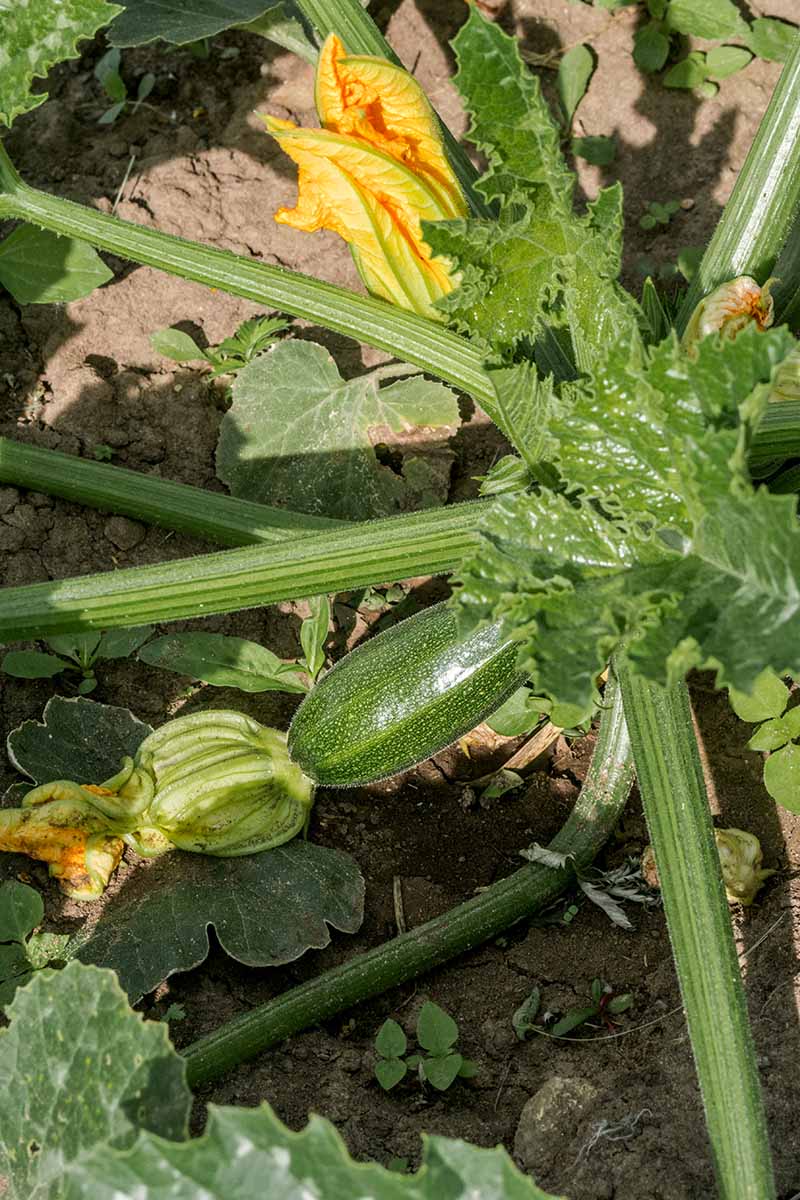
By rotating crops you move the host plants away from where the bugs can easily feed on them.
Crop rotation also puts the plants in a better position to thrive and get the nutrients they need from the soil. This is because different kinds of crops require different quantities of certain nutrients.
So planting them in the same spot year after year degrades the soil, effectively reducing your harvest as a result if you fail to fertilize or add amendments. This also makes it easier for pests to attack since unhealthy plants are more vulnerable.
Proactive Pest Protection
The best protection for your zucchini is good, healthy soil. Still, even in the best of conditions insects like squash bugs can cause damage to plants.
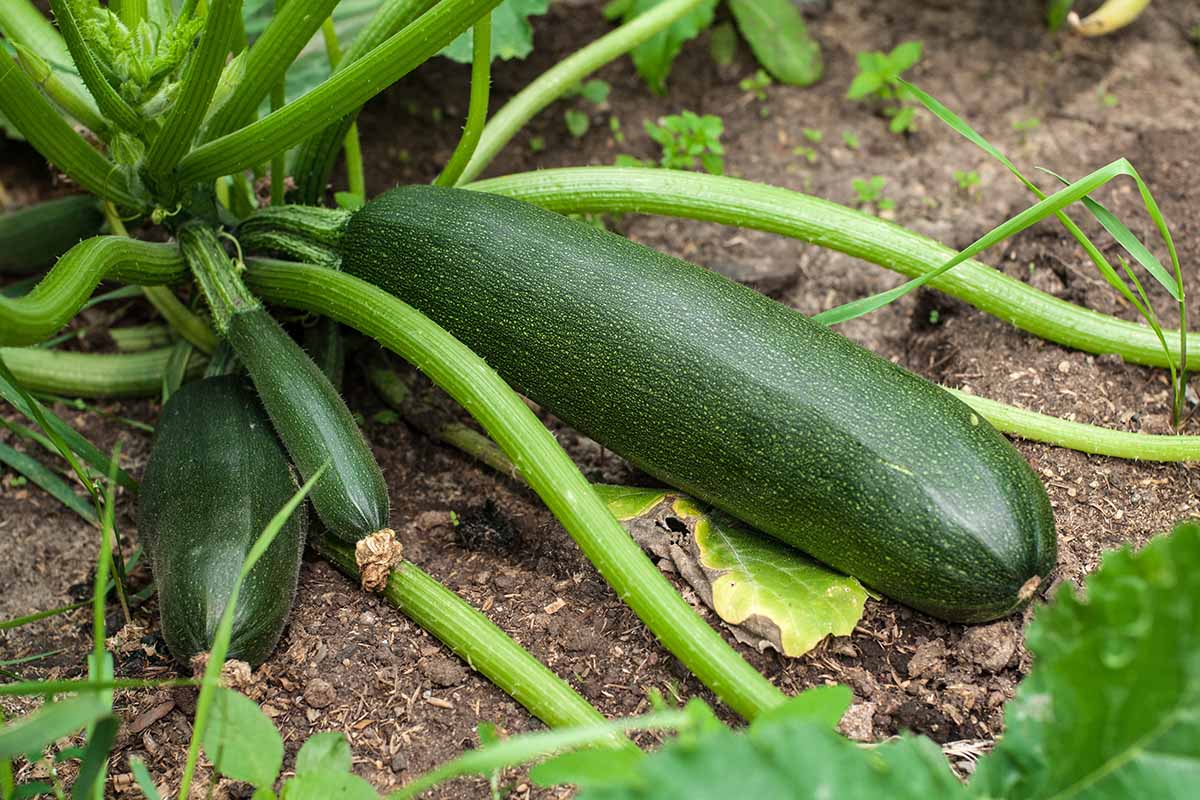
Using physical protections like floating row covers offers a simple, easy way to keep pests in check. You can also use cultural controls, like crop rotation and companion planting to reduce the risk of pest damage.
Have you had problems with squash bugs or other zucchini pests before? What did you do to protect your crops and get the infestation under control? Let us know your favorite methods in the comments section below!
If you want to learn more about how to take care of zucchini, have a read of these guides next:
